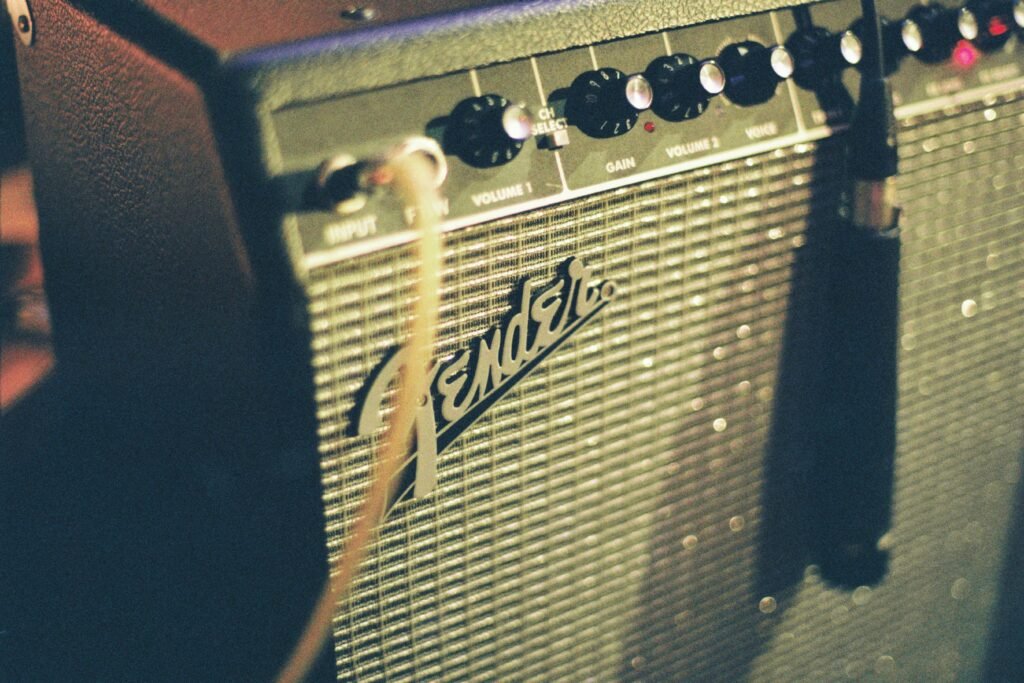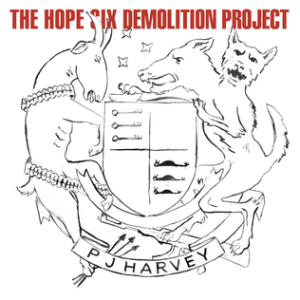PJ Harvey’s The Hope Six Demolition Project occupies a compelling yet polarizing space in her discography. Released in 2016 as the follow-up to her critically lauded Let England Shake, the album continues Harvey’s exploration of global conflicts and societal decay, but shifts its gaze outward with a more journalistic lens. The record was informed by her travels to war-torn and impoverished regions, including Kosovo, Afghanistan, and Washington D.C., alongside photographer and filmmaker Seamus Murphy. These experiences, as chronicled in her lyrics, aim to document the harsh realities of displacement, urban renewal, and systemic neglect.
While Harvey’s previous work often thrived on personal and poetic introspection, The Hope Six Demolition Project takes a deliberate turn toward reportage. The album borrows its name from a controversial housing policy in Washington D.C. that, under the guise of urban renewal, displaced low-income families. This thematic ambition underscores Harvey’s intent: to act as an artistic witness, translating raw observations into music that straddles the line between protest and storytelling.
Musically, the album reflects this outward-looking approach. Harvey employs an array of horns, chants, and clattering percussion, evoking both the chaos of her subject matter and the communal energy of folk traditions. Recorded in public view at Somerset House in London, the creation process itself became a statement about transparency and audience involvement. However, the album’s overt sociopolitical commentary is not without its detractors. Critics have questioned whether Harvey’s outsider perspective sacrifices nuance in favor of spectacle, raising the stakes of how effectively art can engage with issues of inequity and human suffering.
Sonic Exploration

On The Hope Six Demolition Project, PJ Harvey crafts a sonic palette that mirrors the stark, unvarnished realities she seeks to depict. The production, handled by long-time collaborator Flood alongside John Parish and Harvey herself, opts for a raw, almost unpolished aesthetic. This approach steers the album away from the pristine clarity of her earlier works and toward a lo-fi, gritty soundscape that feels intentionally unsettled. The tactile immediacy of the production—replete with room noise, the audible breath of horns, and the clang of percussion—grounds the album’s narratives in a visceral, physical reality.
Musical Arrangements
The musical arrangements are both bold and unconventional, aligning with the record’s journalistic ethos. Horns play a starring role throughout, their brash and sometimes dissonant tones evoking the chaos and urgency of the themes at hand. Tracks like “The Ministry of Social Affairs” feature saxophones that wail with a kind of industrial fury, while “The Wheel” incorporates rhythmic handclaps and chants that conjure the energy of protest. These elements, layered with Harvey’s distinctive vocal delivery, create an atmosphere that oscillates between confrontational and hauntingly reflective.
Vocally, Harvey employs a detached, almost reporter-like tone on many tracks, eschewing her trademark emotive delivery for a more observational stance. This choice, while thematically consistent, may come across as distant or impersonal to listeners accustomed to the emotional intensity of albums like To Bring You My Love. Background vocals, provided by Parish and others, are woven into the arrangements with a communal feel, lending tracks like “River Anacostia” a spiritual, chant-like quality.
Genre Elements
Genre-wise, the album resists strict categorization, drawing from a patchwork of influences that reflect its global subject matter. Elements of blues, folk, gospel, and experimental rock are all present, but they’re blended with a rough-hewn quality that emphasizes texture over polish. This genre-blurring approach feels deliberate, a way of underscoring the universality of the album’s themes while avoiding musical tropes that might romanticize or simplify its subject matter.
Lyrical Analysis

The lyrics on The Hope Six Demolition Project are unflinchingly direct, reflecting PJ Harvey’s intent to document and report rather than obscure or romanticize. The album’s central themes—displacement, inequality, and the unsettling consequences of modernization—are vividly articulated through imagery drawn from Harvey’s travels to areas of conflict and poverty. From the crumbling facades of Washington D.C.’s neglected neighborhoods to the devastating human toll of war in the Balkans and the Middle East, Harvey’s words serve as a stark chronicle of systemic failure and human suffering.
Themes
Recurring motifs of decay and renewal run throughout the album. Tracks like “The Community of Hope” juxtapose hopeful names with grim realities, describing the U.S. capital as a landscape of “drug town” schools and looming political indifference. On “The Wheel,” the image of children spinning endlessly becomes a haunting metaphor for the cyclical nature of violence and loss. Harvey’s observational tone, however, often shifts into critique, such as in “A Line in the Sand,” where she interrogates the futility of political solutions that fail to address underlying humanitarian crises.
The lyrical depth of the album lies in its narrative focus rather than abstract poetics. Harvey’s writing here is straightforward, almost reportorial, favoring blunt descriptions over metaphor or symbolism. This approach is a departure from the layered, evocative lyricism of Let England Shake, where allegory and historical references enriched the album’s messages. On The Hope Six Demolition Project, the simplicity of the language serves its purpose: to convey the starkness of her observations without diluting their gravity. However, this lack of poetic nuance can feel heavy-handed, with some critics accusing Harvey of aestheticizing poverty or offering surface-level commentary rather than deep insight.
Emotional Impact
Emotionally, the lyrics provoke contemplation more than catharsis. Harvey’s detached delivery, paired with the descriptive nature of the writing, creates a sense of distance between the listener and the subjects she portrays. This can evoke discomfort—an intended effect, perhaps—but it may also limit the emotional resonance for listeners seeking connection or deeper empathy. For example, the haunting refrain of “River Anacostia” stirs a sense of foreboding, yet its broader meaning remains somewhat ambiguous, leaving the listener to wrestle with its implications.
Cohesion and Flow

Cohesion and Flow in The Hope Six Demolition Project can best be described as intentional yet uneven, mirroring the fractured and chaotic themes it seeks to explore. The album’s sequencing does not follow a strict narrative arc but instead presents its songs as a series of vignettes, snapshots of the disparate regions and crises that inspired Harvey. This approach, while thematically consistent, can feel fragmented, with abrupt tonal shifts that may disorient listeners searching for a more linear or unified experience.
The opening track, “The Community of Hope,” serves as a bright but biting introduction, using upbeat, almost jubilant instrumentation to highlight the bitter irony of its critique. From there, the album’s tone darkens, with tracks like “The Ministry of Defence” plunging into more ominous, percussive territory. This shifting mood keeps the listener engaged but also emphasizes the patchwork nature of the album’s construction, as if echoing the disparate locations and stories Harvey encountered during her travels.
Thematic Consistency
Despite the jarring transitions between certain tracks, the thematic consistency holds the album together. Each song, whether documenting urban decay or the aftermath of war, contributes to the overarching critique of power structures and the human cost of their failures. The raw production and recurring use of horns, chants, and communal vocals further reinforce a sense of unity, providing a sonic throughline that ties the album’s diverse elements together.
However, the flow between tracks sometimes feels more utilitarian than seamless. Songs like “A Line in the Sand” and “The Orange Monkey” rely heavily on repetitive motifs, which can make them feel static when placed alongside the more dynamic or theatrical moments of the album. While this repetition may serve to emphasize the cyclical nature of the issues Harvey addresses, it can also risk diminishing the momentum of the record as a whole.
Emotionally, the progression mirrors the album’s journalistic stance—more intellectual than visceral. There’s a deliberate avoidance of a climactic or cathartic resolution, reflecting the reality that the problems Harvey highlights are ongoing and unresolved. This choice reinforces the weight of the album’s themes but may leave some listeners yearning for a stronger emotional arc to guide them through the experience.
Standout Tracks and Moments
Within the dense and at times challenging landscape of The Hope Six Demolition Project, several tracks and moments emerge as particularly impactful, offering glimpses of PJ Harvey’s ability to balance her journalistic ambitions with artistic finesse.
Key Tracks
“The Community of Hope”
Opening the album with an almost deceptive brightness, “The Community of Hope” stands out for its sharp juxtaposition of jaunty melodies with biting social critique. The song’s straightforward structure and upbeat rhythm belie its harsh commentary on urban neglect in Washington D.C., encapsulated in the sardonic refrain, “They’re gonna put a Walmart here.” The track’s brevity and satirical edge make it an accessible yet provocative entry point to the album’s broader themes.
“The Wheel”
Arguably the album’s most dynamic track, “The Wheel” combines driving percussion, hypnotic rhythms, and a memorable refrain to deliver one of Harvey’s most urgent performances. The image of children “spinning on the wheel” serves as a chilling metaphor for cycles of violence and displacement. The song’s spiraling energy and repetitive structure amplify its message, making it a centerpiece of the album.
“River Anacostia”
Closing the album on a haunting note, “River Anacostia” captures a spiritual depth that lingers long after the final chord. Built on a slow, meditative progression, the track layers sparse instrumentation with chant-like vocals, creating an atmosphere of foreboding and lamentation. The invocation of the polluted river as both a physical and symbolic presence underscores the album’s themes of decay and neglect, offering a moment of stark, reflective beauty.
Memorable Moments
The Saxophone Crescendo on “The Ministry of Social Affairs”
One of the album’s most arresting instrumental moments comes in “The Ministry of Social Affairs,” where a cacophony of wailing saxophones erupts midway through the track. This chaotic crescendo mirrors the tension and disarray described in the lyrics, serving as a visceral representation of societal dysfunction.
The Chanting Refrain of “River Anacostia”
The repetition of the line “Wade in the water” in “River Anacostia” evokes the spiritual resonance of traditional gospel music, tying the album’s themes of suffering and resilience to a broader historical and cultural context. This refrain, delivered with somber intensity, lingers as one of the album’s most evocative passages.
The Abrupt Ending of “The Ministry of Defence”
The abrupt, jarring conclusion of “The Ministry of Defence” mirrors the destruction and desolation described in its lyrics. This sudden cutoff leaves the listener unsettled, reflecting the unfinished and ongoing nature of the crises Harvey addresses.
Artistic Contribution and Innovation

PJ Harvey’s The Hope Six Demolition Project occupies a singular position within both her discography and the broader music landscape, straddling the line between traditional songwriting and socially conscious art. Its stark, journalistic approach is a departure from the introspection often found in rock and alternative music, offering a rare example of an artist taking on the role of a documentarian. While the album may not fully reinvent the wheel, it represents an ambitious attempt to fuse reportage with music, pushing the boundaries of what can be achieved within the singer-songwriter genre.
Place in Genre/Industry
The album sits at the intersection of alternative rock, experimental folk, and politically charged protest music, a relatively underexplored hybrid in mainstream music. In an industry often dominated by personal narratives or escapist themes, The Hope Six Demolition Project stands out for its direct engagement with real-world issues. This thematic ambition aligns Harvey with artists like Bob Dylan, who chronicled societal unrest, or Public Enemy, who critiqued systemic inequality through their work. However, Harvey’s method is more observational than confrontational, which sets her apart. The album’s unpolished aesthetic and raw delivery feel antithetical to the glossy production norms of its time, challenging the listener to engage with its content rather than consume it passively.
Innovation
Where The Hope Six Demolition Project truly innovates is in its approach to creation and presentation. The decision to record the album in public at London’s Somerset House, with visitors watching the process through one-way glass, exemplifies its commitment to transparency and community engagement. This experimental setup transformed the act of music-making into a form of performance art, blurring the lines between creation and observation. It’s a concept rarely seen in popular music and one that reflects the album’s themes of exposure and scrutiny.
Thematically, Harvey’s use of firsthand experiences as the foundation for her songwriting feels fresh and daring, even if the execution has drawn criticism. While plenty of artists write politically charged music, few immerse themselves in the environments they depict as deeply as Harvey did for this project. By documenting her travels and transforming them into songs, she elevates her role from songwriter to storyteller, drawing attention to overlooked or uncomfortable truths in a way that feels urgent and necessary.
Musically, the album’s innovation lies in its stark blending of disparate elements. The heavy reliance on horns, chants, and unvarnished percussion creates a soundscape that feels both chaotic and grounded, reflecting the disorder and humanity of the stories it tells. Tracks like “The Wheel” and “The Ministry of Defence” employ unconventional structures and instrumentation that prioritize atmosphere over accessibility, further pushing the boundaries of traditional songcraft.
Closing Thoughts

PJ Harvey’s The Hope Six Demolition Project is a bold and ambitious work that pushes the boundaries of her artistry, even as it risks alienating listeners with its unflinching approach. The album’s strengths lie in its thematic daring and willingness to tackle uncomfortable truths, offering a searing critique of societal inequality and systemic failure. Its raw, journalistic perspective distinguishes it from the more introspective fare typical of alternative rock, while its gritty production and experimental arrangements amplify the urgency of its messages. Tracks like “The Wheel” and “River Anacostia” exemplify Harvey’s ability to weave compelling narratives into innovative musical frameworks, creating moments that linger long after the album ends.
However, The Hope Six Demolition Project is not without its shortcomings. Its lyrical straightforwardness, while thematically consistent, can feel heavy-handed at times, leaving less room for the poetic depth and ambiguity that defined much of Harvey’s earlier work. The fragmented flow between tracks and the emotionally detached tone may further hinder some listeners’ ability to fully connect with the album’s message. Moreover, its outsider perspective has drawn criticism for potentially simplifying or aestheticizing the struggles it seeks to document, raising questions about the balance between artistic intent and ethical responsibility.
As a whole, the album represents an important, albeit polarizing, entry in Harvey’s discography. It doesn’t reach the heights of Let England Shake or Stories from the City, Stories from the Sea, but it offers a vital exploration of new creative territory. Its impact will likely depend on the listener’s openness to its confrontational themes and experimental execution.
Official Rating
We award The Hope Six Demolition Project with a rating of 7 out of 10. This rating reflects the album’s undeniable ambition and its moments of brilliance, balanced against its uneven execution and divisive reception. The Hope Six Demolition Project succeeds in challenging norms and fostering difficult conversations, making it a valuable, if imperfect, work of art. While it may not be universally celebrated, its willingness to confront harsh realities ensures its place as a thought-provoking milestone in PJ Harvey’s career.
